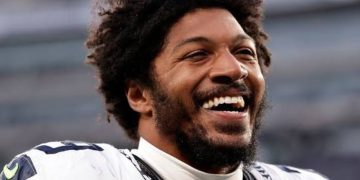Enzo Ferrari does not live in a wealthy world in the summer of 1957. The former driver is engaged in a conflict that is bigger and more drawn out than any previous race he has won. Ferrari’s marriage is in disarray, the company is on the verge of bankruptcy, and the competition is fiercer than ever.
He has to assemble a team from his native Modena, Italy, to lead Ferrari to victory in the 1957 Mille Miglia and 1,000 miles of harsh, perilous open-road racing. Ferrari needs to win, and only if he pushes his drivers, relationships, and himself to the absolute limit.
Enzo and Ferrari’s hometowns of Modena, Brescia, Maranello, and Reggio Emilia serve as the film’s primary locations. Sweeping roads wind around the surrounding Gran Sasso d’Italia mountain range’s mountains.
Authenticity is the unifying theme throughout, showcasing the 1957 Ferrari and Enzo as they truly were.
As a result, Ferrari’s supervising location manager, Janice Polley, collaborated with director Michael Mann to ensure that the film’s settings were as authentic as possible. Polley is considered one of the best in the business, having worked on films such as Pirates of the Caribbean, Tenet, Man on Fire, Heat, and Collateral.
Here, she describes how she recreated the infamous Mille Miglia in Italy using the most amazing roads in the area, using actual places that Enzo Ferrari frequently visited, and how the people of Modena still revere him.
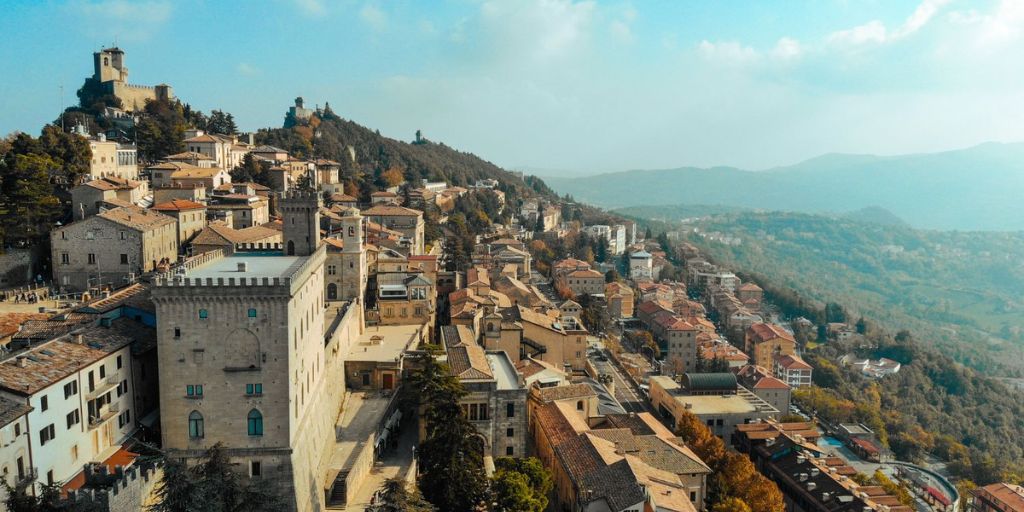
Filming Locations
The film opens with the “Stazione Piccola,” or small railway station, of the provincial railways of Modena (Piazza Manzoni) shrouded in fog. It is named so to distinguish it from the Ferrovie dello Stato station, which is located north of the city in Piazza Dante Alighieri and is featured in several scenes.
Constructed in 1932 during the height of the fascist era to service the countryside and suburbs, the clock was reverted to the 1950s for the filming, complete with vintage furniture and steam locomotives.
This station serves as the backdrop for the movie’s opening sequences. In 1957, two racers, Jean Behra and Alfonso de Portago (one for Maserati and the other for Ferrari), arrived in Modena. These characters will be the ones Mann uses in the movie to tell the story of the legendary track match between the two racing teams.
Largo Garibaldi, home of the imposing Fontana dei Due Fiumi, served as one of Michael Mann’s primary sets in Modena. Enzo Ferrari, his mother Adalgisa, and his wife Laura resided at number 11.
This public area was entirely renovated during filming to serve as an appropriate setting for the narrative, complete with 1950s-style furniture and billboards. Instead, the interior scenes of Casa Ferrari were recorded in a building located at 22 Via Emilia San Pietro, the historic center of Reggio Emilia.
The Monumental Cemetery of San Cataldo serves as a powerful and recurring backdrop throughout the movie, perfectly encapsulating the deep and personal grief that the Ferrari family—especially Enzo and Laura—is experiencing over the loss of their cherished son Dino, a gifted engineering pioneer.
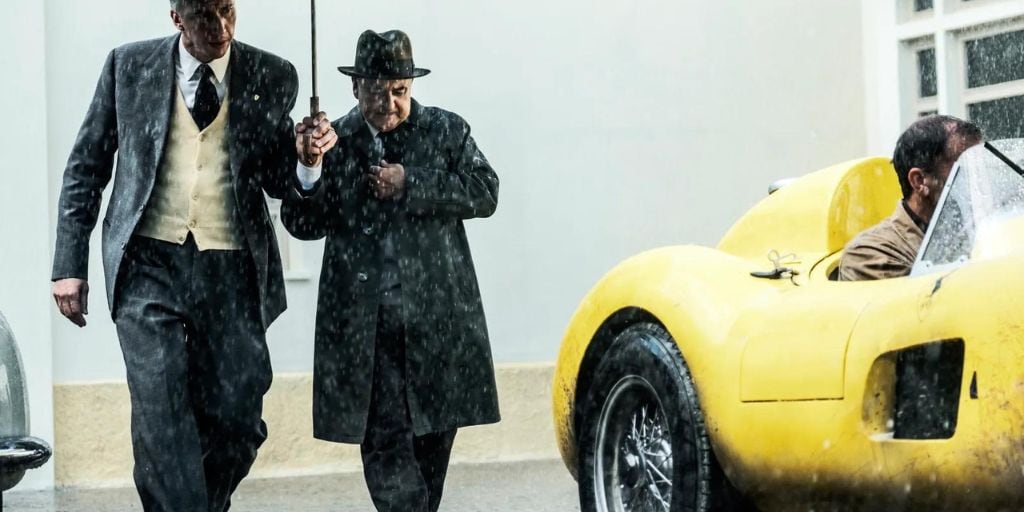
We are right here in the historic area of the massive cemetery in Modena, which was constructed in the latter part of the 1800s by architect Cesare Costa.
Here, in the family tomb, Ferrari and his wife, whose marriage is already in disarray, come at various times of the day to honor their son, who passed away from muscular dystrophy just a year earlier in 1956.
The parents converse with Dino’s spirit in front of the chilly marble, finding solace in recollections in between sobs and heartfelt expressions of compassion. In a specific scene in Mann’s film, a holy mass is held in Scuderia Ferrari’s honor.
Mechanics, engineers, laborers, and every member of the car industry’s family are seated between the pews in the church of San Pietro in Modena, listening to a sermon that proudly highlights their accomplishments and activities.
One of the oldest monastic complexes in the city is where we are. The scenes show the church’s interior, which is enhanced by Antonio Begarelli’s terracotta statues; outside, on the patio, a number of classic cars, including a Lancia, a Topolino, and a Balilla, are waiting, their drivers dressed in period costumes.
Against the backdrop of the 1957 Mille Miglia, some of Mann’s most suspenseful scenes were filmed in the center of Modena, beneath the city’s most famous streets and monuments.
A film set was created to resemble the passage of the fabled race, with Piazza Grande featuring the Ghirlandina bell tower and Piazza Roma featuring the Palazzo Ducale in the background.
Here in Piazza Roma, the storied Cavallino restaurant of Maranello, which was situated in the 1950s across from the iconic Ferrari factory entrance, has been set for the production’s needs.
Finally, the impressive Palazzo del Foro Boario, constructed in 1833, has been added to these locations. It was used as a picturesque backdrop during a race in which actor Patrick Dempsey portrayed Ferrari driver Piero Taruffi, the Mille Miglia winner that year.
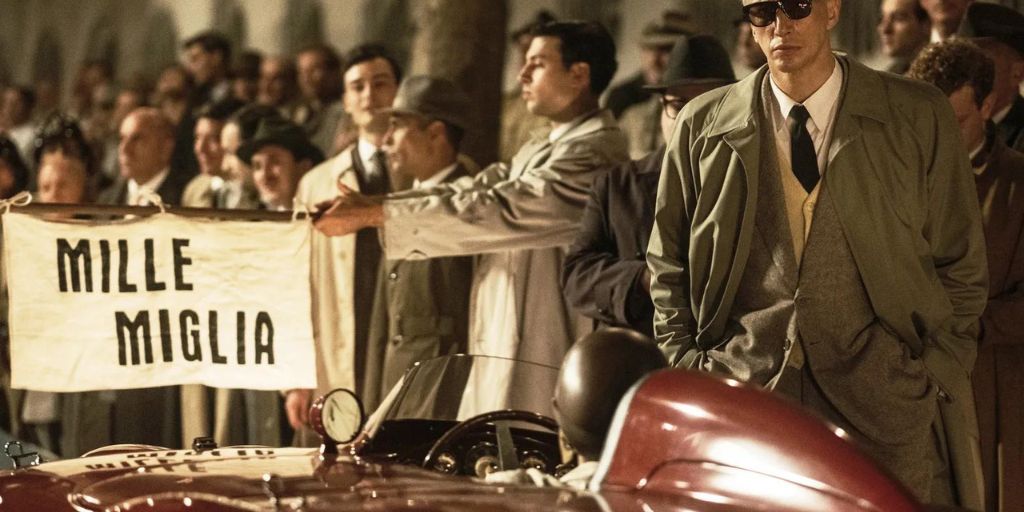
The Ferrari Factory in Maranello
The Ferrari Factory, the center of Enzo Ferrari’s professional life, is the next stop on our tour. Originally established in the 1930s in Modena, the factory symbolized by the iconic Prancing Horse was relocated to the neighboring town of Maranello in 1943, marking the start of its fabled history.
However, why did Ferrari decide to build his factory in Maranello? Undoubtedly due to its close proximity to Modena, but also because Enzo knew the town well, having owned a farmhouse and a piece of land there.
Ferrari’s most iconic vehicles, from Granturismo to Formula 1, from Formula 1 to Sport Prototipi, were created at the factory via Abetone, where the company is still headquartered. These vehicles are on display at the Ferrari Museum.
Due to the inability to film in the Maranello factory, the production team for the Ferrari movie recreated the factory’s entrance on Via Bering, in the Madonnina district of Modena, complete with its gate and yellow Ferrari sign.
Enzo Ferrari’s Barber in Modena
Enzo Ferrari considered shaving to be an essential ritual. He would leave himself in the capable hands of his devoted friend Antonio D’Elia, who would later be joined by his nephew Massimo, every day when he went to the salon located at Corso Canalgrande 73 in Modena.
He would only get his face shaved by them, and only they, on the condition that they would not bother him during his regular wellness break.
When the salon was closed, which was typically on Sundays and Mondays, his uncle and father would go to the engineer’s house, where a barber’s post had been set up especially, according to his nephew Alessandro, the current owner.
Not only did the American director of “Ferrari” film this part of Drake’s life, but he also shot a scene inside the historic barbershop that is still in business today.
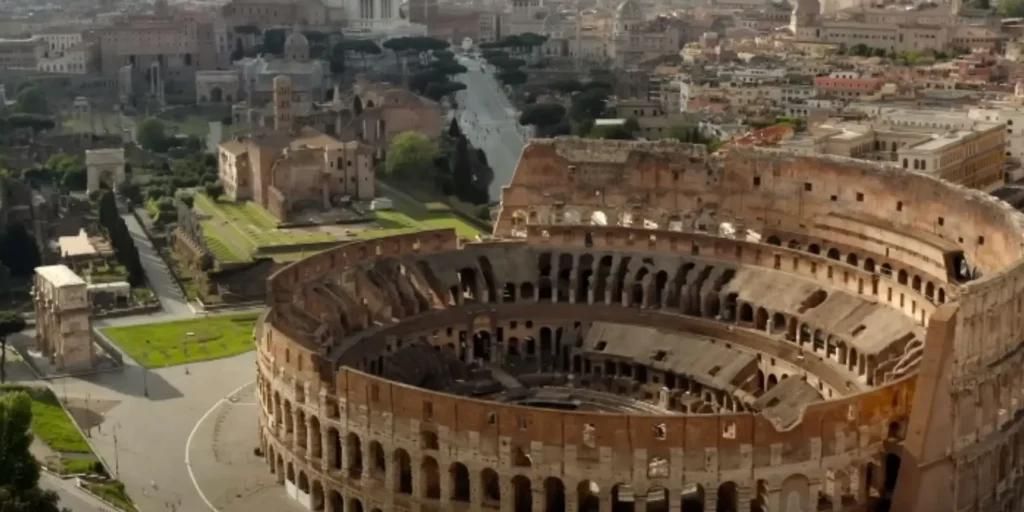
Storchi Theatre
The movie features a pivotal, choral, and dreamy scene in which Modena attends the premiere of Verdi’s La Traviata on a gala night at the theatre.
This poignant passage in the script builds to a very emotional climax by transporting the protagonists through long-forgotten regrets and memories.
The principal opera house in Modena, Teatro Comunale Pavarotti-Freni, was the location of the scene where Ferrari assists the opera. In contrast, the exterior shots took place in front of the Storchi Theatre in Largo Garibaldi, a short distance from Enzo Ferrari’s former residence.
The closeness of Enzo Ferrari’s residence and the theatre is also evident in the film, to the extent that Laura and Adalgisa Ferrari, the mother of Drake, allowed themselves to be swept away by Verdi’s melodies by just opening their windows.
Other Locations
Apart from Modena and its historical core, numerous other locations in Emilia-Romagna were used for filming sequences for the movie “Ferrari”:
The hilly area around Castelvetro di Modena, especially near Puianello, was the subject of multiple shots, including aerial views of the hills between Castelvetro and Maranello; Imola Circuit: Several of the movie’s opening scenes were filmed at the renowned Imola Circuit, which bears the names of Enzo Ferrari and his son Dino.
The 1957 Mille Miglia accident scene was filmed along the straight stretch of the long Strada della Vittoria in Novellara (RE), where driver Alfonso De Portago’s Ferrari 335S crashed into nine onlookers. The accident actually happened in the Mantua province in Guidizzolo;
Lagoons of Comacchio: these are used as a backdrop in certain scenes that immortalize the Mille Miglia, especially the provincial road Argine Agosta. The movie was also filmed in locations other than Emilia-Romagna, specifically at the Morano Po Circuit in Pontestura (AL).
All of the auto racing teams in and around Modena used the city aerodromo for their testing prior to the construction of the Fiorano circuit close to Maranello.
It was here that Maserati and Ferrari repeatedly tested each other’s engines and drivers’ abilities, and it was also where young driver Castellotti crashed on the Circolo della Biella grandstand on March 14, 1957.


